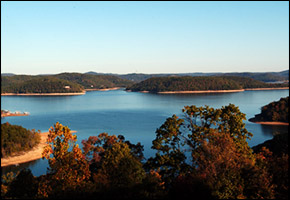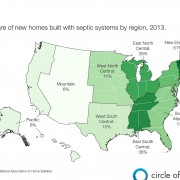Reports on Oil Shale Development, Water Infrastructure Financing
Better investing through better information.
Ceres, a coalition of businesses, investors and environmental groups, peddles information, particularly about risk.
Climate risk, water risk, supply chain risk: no sector goes untouched. Knowledge—and better dissemination of it—is the Boston-based group’s version of the prosperity gospel. Spread the good data, and worthier investments will flow forth.
Two recent reports use this method on the key, twinned fields of water and energy.
This week, Ceres released a four-page white paper on the risk to investors in oil shale development. Not to be confused with shale oil, which is seeing breakneck production in places like North Dakota, oil shale is not in a liquid state and must be heated for extraction. The technology for doing so is not yet commercially viable.
The biggest oil shale reserves are in the Green River Formation of Colorado, Utah and Wyoming, mostly on federal lands. The U.S. government recently proposed leasing some of these acres for research projects. Ceres calls this “prudent” because the many of the risks to investors are still quite uncertain. Those risks include:
- Technological uncertainty
- Regulatory risk
- Market risks
- Water constraints
- Risk from public opposition
Don’t Do What We’ve Done
The second Ceres report looks at the nation’s water infrastructure. Everyone agrees that the current path—centralized, water monopolies with incentives to sell water but insufficient funds to pay for repairs—is littered with broken parts. There is no consensus, however, about the best way to proceed.
“Somehow,” the authors argue, “we must broker comity and a shared sense of mutual interest between those who use water, those who provide it, those who build and finance our water systems, and those who advocate for the protection of the natural systems that also rely on ‘our’ water.”
The report does this by taking a broad survey of the innovative things being done across the country and compiling them in a rough outline of recommended practices and exemplary organizations.
Ceres finds a mix of green urban infrastructure, forest restoration, water quality markets, and policies or user fees that encourage the private sector to take on water efficiency improvements or to reduce the demand for water.
Santa Fe, for example, requires property developers to retrofit old buildings or make other upgrades. The water saved is what the developer has to work with. The city is also working with the U.S. Forest Service to reduce the risk of fire in its watershed. For the wisdom in this approach, you need only look north to Denver, where vicious fires in 1996 and 2002 cost $40 million for water treatment, reservoir dredging and other erosion-related costs, according to the report.
Information, no doubt, is also essential. Ceres recommends a standardized set of performance benchmarks for utilities so that they can compare how they operate and can justify certain investments.
Is your city tearing down old walls and building something new in the water-supply sector? Contact Brett Walton
–Brett Walton
Circle of Blue reporter
Brett writes about agriculture, energy, infrastructure, and the politics and economics of water in the United States. He also writes the Federal Water Tap, Circle of Blue’s weekly digest of U.S. government water news. He is the winner of two Society of Environmental Journalists reporting awards, one of the top honors in American environmental journalism: first place for explanatory reporting for a series on septic system pollution in the United States(2016) and third place for beat reporting in a small market (2014). He received the Sierra Club’s Distinguished Service Award in 2018. Brett lives in Seattle, where he hikes the mountains and bakes pies. Contact Brett Walton











Leave a Reply
Want to join the discussion?Feel free to contribute!